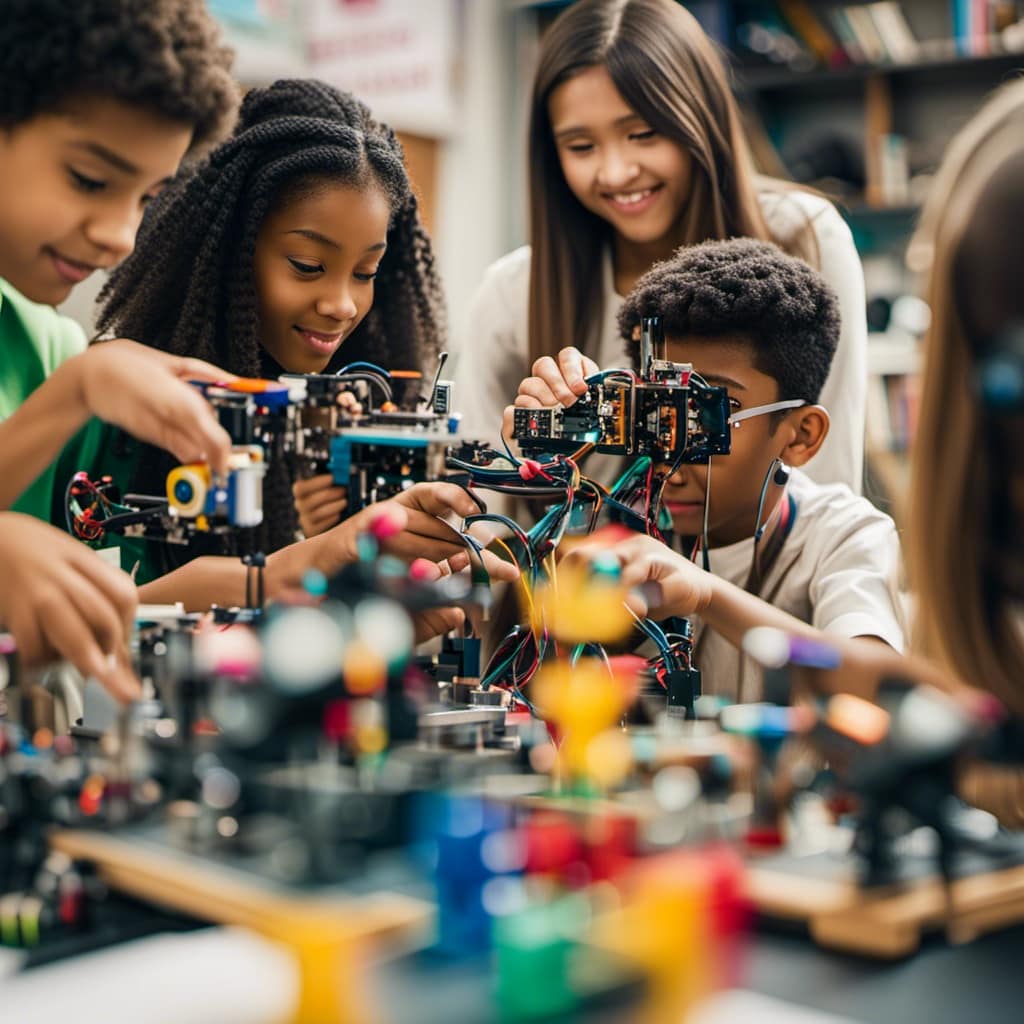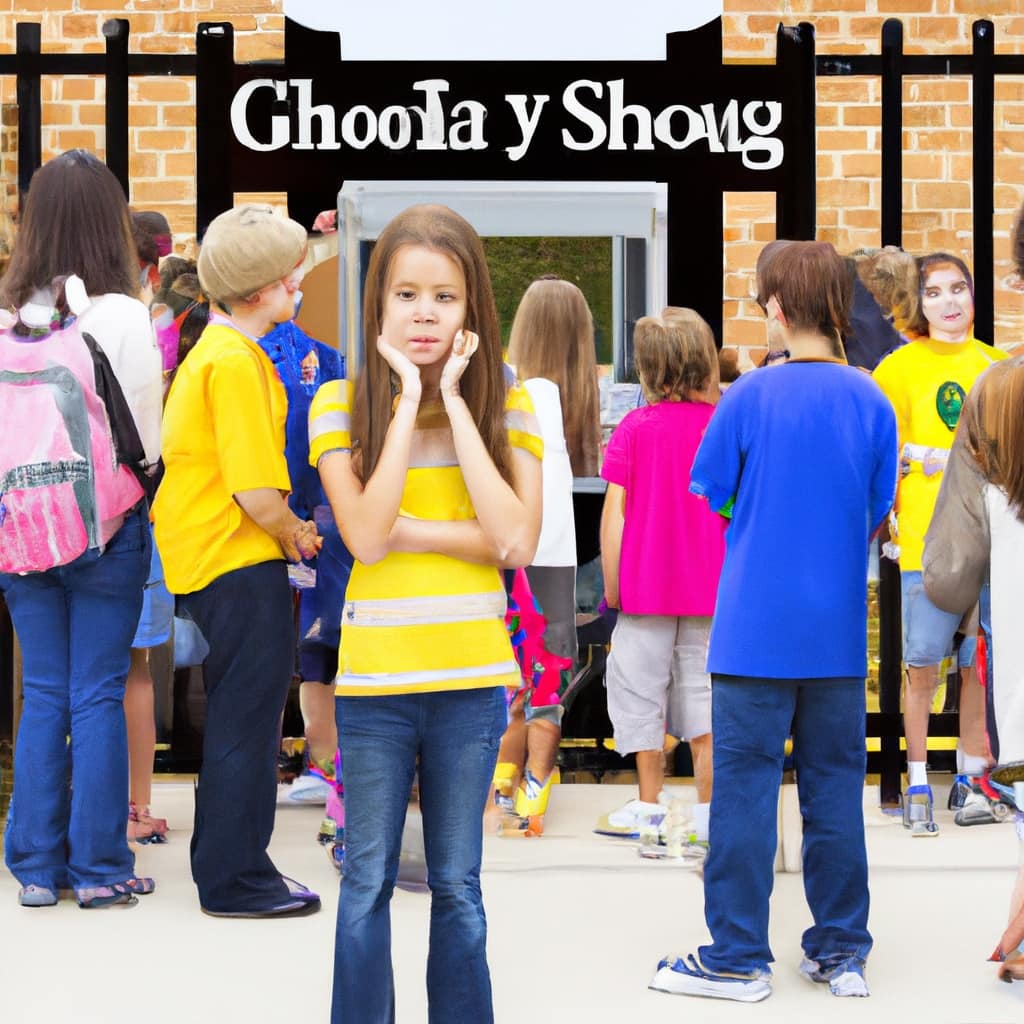Every parent aspires to create a bright future for their child.
That’s why I’m thrilled to share with you the incredible benefits of STEM toys in early childhood education.
These toys aren’t just your average playthings – they’re powerful tools that promote creativity, critical thinking, and problem-solving skills.
With STEM toys, children can dive into hands-on learning experiences that foster curiosity and develop essential skills beyond memorization.
Get ready to unlock your child’s potential and boost their early learning like never before!
Key Takeaways
- STEM toys promote creativity, critical thinking, and problem-solving skills in early childhood education.
- STEM toys provide a hands-on learning experience and enhance the play-based approach to education.
- STEM toys foster curiosity, risk-taking, resilience, and persistence.
- STEM toys help develop essential skills such as mathematical proficiency, logical reasoning, and strategic thinking.
The Benefits of STEM Toys in Early Childhood Education
STEM toys have numerous benefits in early childhood education. They promote creativity, critical thinking, and problem-solving skills. These toys provide a hands-on learning experience that fosters innovation and encourages children to think outside the box. Through hands-on activities and experiments, STEM toys allow children to explore and experiment with different concepts and ideas. This type of learning enhances the play-based approach to education, allowing children to develop a deeper understanding of scientific, technological, engineering, and mathematical principles.

STEM toys also foster curiosity, risk-taking, resilience, and persistence, all of which are essential skills in early childhood education. By engaging in open-ended challenges, children are encouraged to be creative and find innovative solutions to problems. In this way, STEM toys play a crucial role in fostering creativity and critical thinking skills in young children.
Enhancing Learning Through Hands-On Experiences
As a child, I love exploring and experimenting with hands-on activities that allow me to learn through experience. Hands-on learning, also known as experiential education, is a fantastic way for children to engage with and understand new concepts.
Here are three reasons why hands-on learning is so beneficial:
-
Active Engagement: Hands-on activities require active participation, allowing children to fully immerse themselves in the learning process. This active engagement helps to solidify understanding and retention of information.
-
Real-World Application: Hands-on learning provides opportunities for children to apply their knowledge to real-world situations. By doing so, they can see the practical relevance of what they are learning and develop problem-solving skills.
-
Multisensory Experience: Hands-on learning engages multiple senses, such as touch, sight, and hearing. This multisensory experience enhances memory and understanding, as it allows children to make connections between what they see, feel, and hear.

Overall, hands-on learning provides a dynamic and effective approach to education, allowing children to learn and grow through firsthand experiences.
Fostering Creativity and Critical Thinking Skills
When I engage in hands-on activities, I can explore different possibilities and foster my creativity and critical thinking skills. STEM toys play a crucial role in fostering these skills by encouraging risk-taking and fostering innovative solutions. Through open-ended challenges and problem-solving activities, STEM toys promote thinking outside the box and exploring different possibilities. These toys provide a platform for children to develop resilience and persistence as they face challenges and find multiple ways to approach a problem. By engaging in hands-on experiments and activities, children can enhance their problem-solving mindset and develop the ability to find innovative solutions. STEM toys not only enhance creativity but also build critical thinking skills, preparing children for future success.
| Fostering Creativity and Critical Thinking Skills |
|---|
| – Encourages risk-taking |
| – Promotes thinking outside the box |
| – Develops resilience and persistence |
| – Enhances problem-solving mindset |
| – Fosters innovative solutions |
Developing Problem-Solving Abilities With STEM Toys
By engaging in hands-on activities with these toys, I can develop my problem-solving abilities and enhance my critical thinking skills. Here are three ways STEM toys help me improve my problem-solving abilities:
-
Hands-on problem-solving activities: STEM toys provide opportunities for me to engage in hands-on problem-solving activities. Whether it’s building structures with blocks or solving puzzles, these activities challenge me to think critically and come up with innovative solutions.
-
Critical thinking challenges: STEM toys often come with critical thinking challenges that require me to analyze, evaluate, and solve problems. These challenges help me develop my reasoning skills and teach me how to approach problems from different angles.
-
Promote creativity: STEM toys encourage me to think outside the box and explore different possibilities. Through open-ended challenges and experiments, I can unleash my creativity and come up with unique solutions to problems.

Engaging with STEM toys not only makes learning fun but also helps me develop essential problem-solving abilities and enhance my critical thinking skills.
Building Mathematical Proficiency Through STEM Toys
Engaging with these educational playthings allows me to develop a deeper understanding of mathematical principles and build proficiency in the subject. STEM toys play a crucial role in fostering resilience and perseverance, as well as enhancing spatial awareness and visualization skills. Through hands-on activities and problem-solving challenges, these toys encourage children to think critically, explore different approaches, and find innovative solutions.
In addition, STEM toys provide opportunities for children to develop their logical reasoning and strategic thinking abilities. By engaging in open-ended challenges and experimenting with various concepts, children can build resilience and persistence, which are essential skills for success in mathematics and beyond.
To further illustrate the benefits of STEM toys in building mathematical proficiency, here is a table showcasing the specific skills and benefits associated with these playthings:
| Skills Developed | Benefits |
|---|---|
| Problem-solving | Enhances critical thinking skills |
| Logical reasoning | Improves spatial awareness |
| Strategic thinking | Fosters resilience and perseverance |
Engaging with STEM toys not only makes learning mathematics enjoyable but also equips children with the necessary skills to excel in the subject and beyond.
The Role of STEM Toys in Logical Reasoning and Strategic Thinking
Using STEM toys allows me to develop logical reasoning and strategic thinking skills, which are essential for problem-solving and finding innovative solutions. Here are three reasons why STEM toys play a crucial role in fostering curiosity, risk-taking, and enhancing spatial awareness and visualization:

-
Spatial Awareness and Visualization: STEM toys provide hands-on activities that require spatial thinking and visualization skills. Building structures, solving puzzles, and working with shapes and patterns help me understand spatial relationships and improve my ability to visualize objects and concepts.
-
Fostering Curiosity: STEM toys encourage me to ask questions, explore, and seek answers. They spark my curiosity by presenting challenges and open-ended problems that require creative thinking and experimentation. This fosters a love for learning and a desire to discover new things.
-
Risk-Taking: STEM toys create a safe environment for me to take risks and explore different approaches to problem-solving. They teach me to embrace failure as an opportunity to learn and grow. By trying different strategies and learning from mistakes, I develop resilience and perseverance.
Overall, STEM toys provide a fun and engaging way to develop essential skills while fostering curiosity, risk-taking, and spatial awareness and visualization.
The Impact of Technology on STEM Toys and Early Childhood Learning
Technology has revolutionized the world of educational toys, creating interactive and immersive experiences that enhance early childhood learning. The impact of technology on STEM toys and early childhood learning is significant.
With the integration of augmented reality, 3D printing, robotics, and coding skills, children are equipped with computational thinking and problem-solving abilities crucial for future careers.

Virtual reality (VR) enhances understanding and retention of STEM concepts by providing a hands-on and engaging experience.
Personalized learning through artificial intelligence (AI) tailors educational experiences to individual children’s needs, allowing for a more effective and efficient learning process.
As technology continues to advance, the future of STEM toys in education looks promising. They will continue to provide children with innovative and engaging learning experiences, fostering creativity, critical thinking, and problem-solving skills necessary for their future success.
Integrating Virtual Reality for Enhanced Understanding
Experiencing virtual reality allows me to explore and understand complex concepts in a more immersive and interactive way. Here are three benefits of using virtual reality for interactive learning experiences:
-
Enhanced Engagement: Virtual reality provides a unique opportunity for children to actively participate and engage with educational content. By being fully immersed in a virtual environment, they can interact with objects, manipulate variables, and see the impact of their actions in real-time. This hands-on approach fosters deeper understanding and retention of concepts.
-
Multi-Sensory Learning: Virtual reality engages multiple senses, such as vision, hearing, and touch. This multi-sensory experience enhances the learning process by creating a more realistic and memorable environment. Children can explore different perspectives, visualize abstract ideas, and develop spatial awareness through interactive simulations.

-
Safe and Controlled Experiments: Virtual reality allows children to conduct experiments and simulations in a safe and controlled environment. They can explore dangerous or inaccessible places, experiment with scientific phenomena, and practice problem-solving skills without any real-world risks. This fosters curiosity, creativity, and critical thinking abilities.
Overall, integrating virtual reality into educational settings provides numerous benefits, creating engaging and interactive learning experiences that promote active exploration and understanding of complex concepts.
Personalized Learning With Artificial Intelligence
Incorporating artificial intelligence into personalized learning has revolutionized my educational experience. It tailors content and activities to my individual needs and learning style.
Personalized learning with AI integration allows me to have a customized learning journey that meets my unique requirements. AI algorithms analyze my strengths and weaknesses, track my progress, and provide targeted recommendations to enhance my learning outcomes.
With personalized learning, I can learn at my own pace, explore topics that interest me, and receive immediate feedback on my performance. The use of AI in education also enables adaptive assessments, which adjust the difficulty level of questions based on my abilities. This ensures that I am continuously challenged and motivated to reach my full potential.
Through personalized learning with AI integration, I am empowered to take ownership of my education and engage in meaningful and impactful learning experiences.

Exploring Augmented Reality, 3D Printing, and Robotics
As I explore augmented reality, 3D printing, and robotics, I am amazed by the endless possibilities they offer for hands-on learning and problem-solving. These cutting-edge technologies are revolutionizing education and providing exciting opportunities for children to engage in immersive learning experiences.
Here are three ways these technologies are transforming education:
-
Exploring virtual reality applications: Virtual reality allows children to step into virtual worlds and explore concepts in a way that traditional methods cannot replicate. Whether it’s exploring the depths of the ocean or traveling to outer space, VR provides a unique and interactive learning experience.
-
Incorporating hands-on experiments: 3D printing and robotics enable children to bring their ideas to life through hands-on experimentation. They can design and create their own objects using 3D printers, or program robots to perform specific tasks. This encourages creativity, problem-solving, and critical thinking skills.
-
Fostering collaboration and teamwork: These technologies also promote collaboration and teamwork as children work together to solve problems and complete projects. They learn to communicate effectively, share ideas, and work towards a common goal.
Equipping Children With Coding Skills for Future Careers
I am amazed at how coding skills are essential for future careers, equipping children with the ability to think critically and solve complex problems. In today’s digital age, coding has become a fundamental skill that opens doors to various career opportunities.

From software development to data analysis, coding skills are highly sought after in industries such as technology, finance, healthcare, and even the arts. By learning to code at a young age, children not only gain a competitive edge but also develop important cognitive skills.
Coding promotes logical thinking, problem-solving, and creativity, as children learn to break down problems into smaller parts and find innovative solutions. Moreover, coding fosters computational thinking, which is the ability to approach problems in a systematic and analytical way.
These skills are not only valuable in future careers but also in everyday life, as technology continues to shape the world around us.
Frequently Asked Questions
How Do STEM Toys Promote Risk-Taking and Resilience in Early Childhood Education?
STEM toys promote risk-taking and resilience in early childhood education by encouraging children to explore and experiment with different concepts. Through hands-on learning experiences, children learn to overcome challenges, adapt to new situations, and develop the confidence to take risks and persist in their learning.
What Are Some Examples of Open-Ended Challenges That STEM Toys Offer?
STEM toys offer open-ended challenges that promote problem-solving skills and critical thinking. They provide opportunities for children to explore and find innovative solutions. These challenges enhance creativity, resilience, and the ability to think outside the box.
How Do STEM Toys Enhance Spatial Awareness and Visualization Skills?
STEM toys enhance spatial awareness and visualization skills by providing hands-on activities that require children to think spatially and mentally manipulate objects. This promotes problem-solving abilities and helps develop a deeper understanding of spatial reasoning concepts.

Can You Provide Some Examples of How STEM Toys Encourage Analytical Thinking in Children?
Sure! STEM toys encourage analytical thinking in children by presenting open-ended challenges that require problem-solving and critical thinking. For example, building a bridge with blocks or solving puzzles help develop analytical skills and foster critical thinking abilities.
How Does Virtual Reality Enhance the Understanding and Retention of STEM Concepts in Early Childhood Education?
Virtual reality applications in early childhood education enhance understanding and retention of STEM concepts. They provide immersive experiences that engage children and make abstract concepts more tangible and memorable, boosting learning outcomes.
Conclusion
In conclusion, STEM toys are like magical keys that unlock a world of possibilities for young minds. They ignite a spark of curiosity, guiding children on a journey of exploration and discovery.
With STEM toys, children don’t just learn, they soar. These toys are the compasses that point them towards creativity, critical thinking, and problem-solving skills. They become architects of their own knowledge, constructing a solid foundation for future success.
So let us embrace the power of STEM toys and watch as our little learners spread their wings and reach for the stars.











